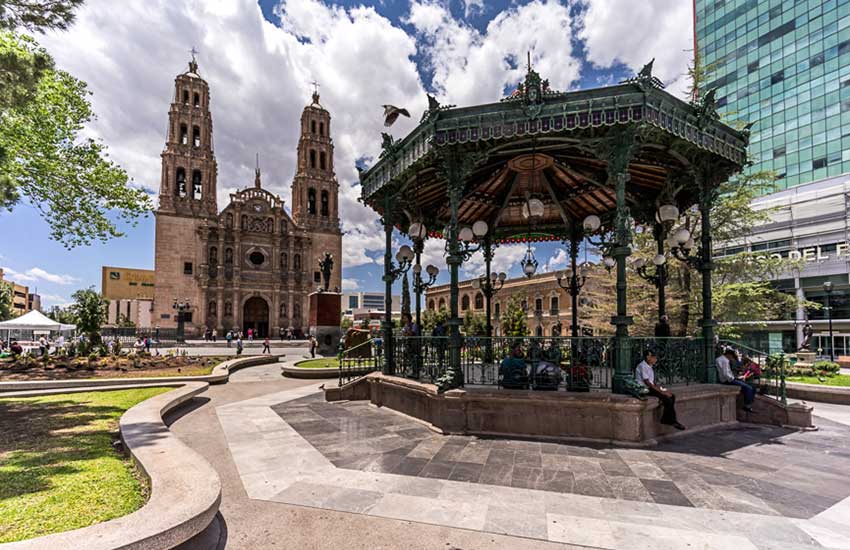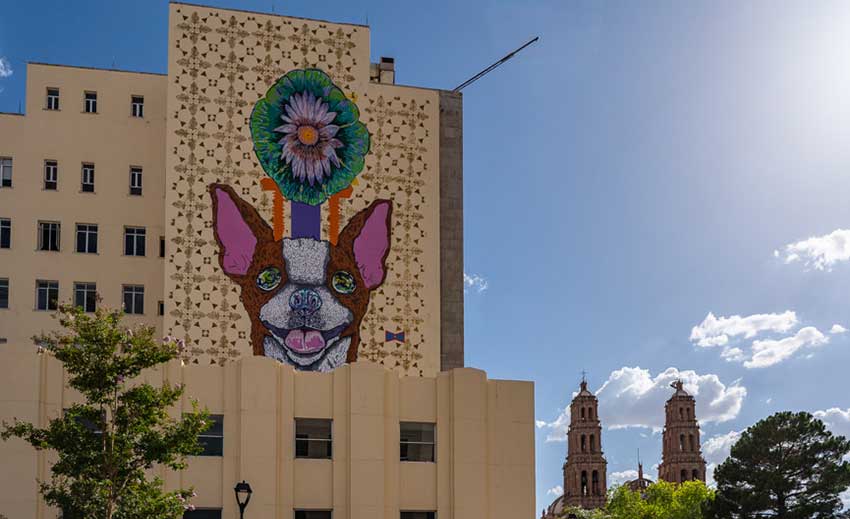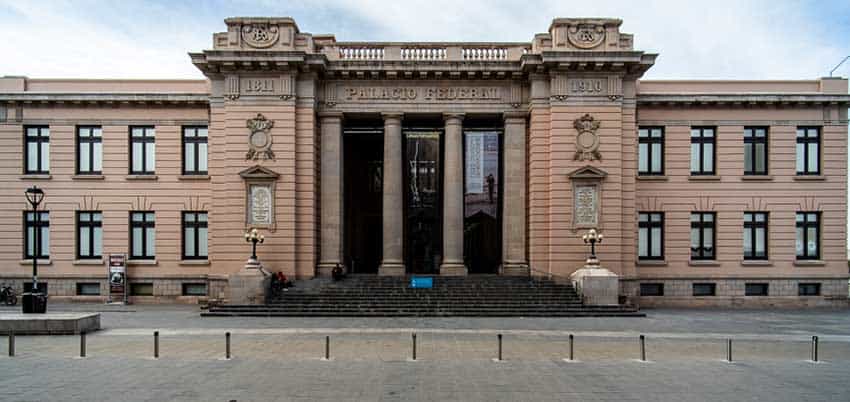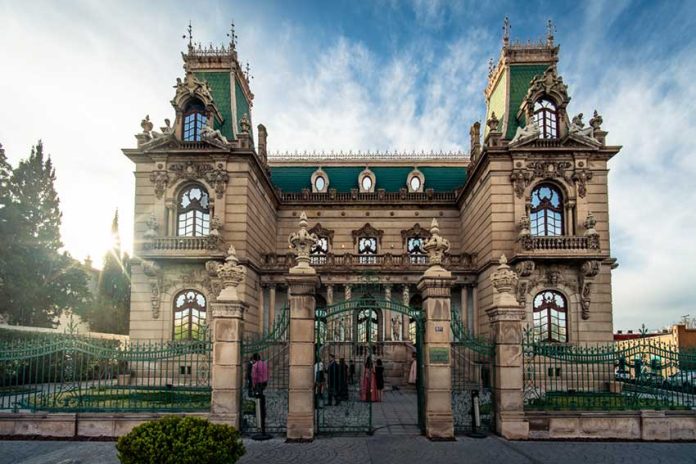“Qué bonito es Chihuahua.” So goes the refrain in the popular Mexican folk song El Corrido de Chihuahua written by Pedro de Lille.
Although he was singing about the entire state, the sentiment is true about the city itself. Squeezed between the vast desert to the north and west, the mahogany-toned peaks of the Sierra Nombre de Dios in the east, and punctuated by a series of rolling hills throughout the city, Chihuahua is far more than just a starting point for a trip to Copper Canyon on the famous train, El Chepe.
Here, art and architecture combine with plenty of revolutionary history to give a unique insight into norteño culture.
Modernization has spread rapidly through Chihuahua over the past 40 years, from the manufacturing plants producing automotive and mechanical parts for export, to American style malls and plazas that line Periférico de la Juventud along the western edge of the city. But despite the growth, much of the historical center retains its colonial and revolutionary period charm.
As with a trip to many Mexican cities, a visit to Chihuahua starts in the central square, Plaza de Armas. The 18th-century baroque style Catedral de Chihuahua dominates the square with its two grand towers imposed against the azure-blue sky.

Around the plaza, a microcosm of Chihuahuan culture emerges. Shoe shiners line the outskirts of the plaza, polishing up the dusty leather boots of men wearing plaid shirts, weather-worn jeans, oversized belt buckles and cowboy hats in a throwback to Chihuahua’s ranching heritage.
In the fountain in front of the cathedral, children play with youthful exuberance, running through the water without a care in the world. Locals sit around on the benches of the plaza, waiting for loved ones, passing the time, or just breathing in the life of the town. Far away from the traffic and chaos of the Periférico, life seems to slow down a bit here.
Large-scale murals and urban artwork adorn many of the buildings in central Chihuahua. Among them are an impressive recreation of Mexican photographer Héctor García Cobo’s iconic photograph of Chihuahuan muralist and revolutionary David Alfaro Siqueiros in a Mexico City prison, and a greater-than-life-sized mural of — you guessed it — a chihuahua dog high on the side of an office building just off Plaza de Armas.
Taking a stroll down Calle Libertad, Chihuahua’s palm tree-lined pedestrian boulevard, young couples pop in and out of fashionable clothing and shoe stores, interspersed with fast food chains and ice cream shops. Here, modern design and historical architecture meet, with many of the trendy stores housed in buildings more than a century old.
Near the end of Calle Libertad sits Casa Chihuahua, once the site of Mexican independence leader Miguel Hidalgo’s jail cell. Built on the location of a former Jesuit college, the building now hosts the Chihuahua State Heritage Museum, highlighting Chihuahua’s environmental diversity and cultural heritage. Inside, three circular rooms celebrate the desert, plains, and mountains of Mexico’s biggest state, with panoramic images and giant screens playing clips of the state’s natural areas.
In adjoining rooms, displays contain information on Chihuahua’s artistic history, including filmmakers and actors, musicians and artists that have called Chihuahua home. In the basement, a gallery hosts rotating art exhibits from some of Chihuahua’s and Mexico’s leading artists. Just behind the gallery space, the museum holds the cold, dark former jail cell of Miguel Hidalgo.

From the pedestrian area of Calle Libertad a short walk south leads to Paseo Simón Bolívar, named after the Venezuelan revolutionary leader popular throughout Latin America. Among the leafy green parks and popular restaurants and cafes of the broad avenue, more of Chihuahua’s architectural history and design is present.
A significant number of buildings along the Paseo were built as mansions for the elite class in the period just before the Mexican Revolution began.
One of the finest examples is Quinta Gameros, which now hosts a regional museum. Although the facade was built in art nouveau style, the building contains almost as many architectural styles as it’s had owners. Manuel Gameros Ronquillo, the original owner of the mansion, went to France with his wife in the early 1900s to find a style of house that they liked.
Upon returning from France, Gameros Ronquillo’s wife passed away in 1904, before construction of the house could begin. Nonetheless, Mr. Gameros started building in 1907.
By 1910, construction was just about finished, combining elements of late baroque, beaux arts, and second empire architecture along with art nouveau. However, the Mexican revolution broke out, and revolutionary forces took control of Quinta Gameros. Gameros Ronquillo was forced to flee to El Paso, never having lived in his mansion.
Inside, an expansive lobby spreads out and a cedar staircase straight ahead leads to an elaborate stained glass window made by Tiffany’s in New York. On the ground floor, the dining room, bedrooms and living areas contain period furniture from the Requena collection, donated to the museum by Pedro Fossas Requena, the grandson of the creator José Luis Requena.

Upstairs, art exhibits from Mexican photographers, artists and sculptors adorn the walls. In the rear of the building, an open courtyard leads to a small cafe and gift shop.
In contrast to the extravagantly decorated Quinta Gameros, Quinta Luz, the former home of Francisco “Pancho” Villa, Mexico’s famous revolutionary leader, and his wife Doña Luz Corral, is much simpler. The pale pink palace was converted to the Historical Museum of the Mexican Revolution following the death of Sra. Corral, who lived in the mansion until her passing in 1981.
On the main floor, the remnants of Villa and Corral’s living area include a small kitchen and a Spanish style bathroom. In a courtyard toward the back of the museum sits Pancho Villa’s bullet-riddled 1922 Dodge roadster, which he was driving when he was assassinated as he headed back to his hacienda in Hidalgo del Parral in 1923.
Along the back wall of the museum a complex mural spreads out, portraying many of the main characters of the Mexican Revolution, including Francisco Madero, Venustiano Carranza and of course Pancho Villa himself. Both bright and dark at the same time, the mural rivals many of the more famous works of art from around Mexico.
Upstairs, historical artifacts from the Mexican Revolution grace each of the rooms. An array of weaponry, from sabers and swords to rifles and cannons used by both the federal army and the revolutionary forces demonstrate the type of firepower both sides had.
Newspaper clippings and black and white photographs from the era tell the story of the division del norte’s exploits as Pancho Villa led his troops around Mexico in his quest to overthrow the government of the day.
Rooms dedicated to Mrs. Corral and the many visits she received over the years from politicians and celebrities complete the collection of the history of the revolution and the house.
As evening falls in Chihuahua, the light of the setting sun casts its fiery red tones upon the side of the Sierra Nombre de Dios. The warm glow spreads over the city, and beyond the art, history and architecture of this noble and royal city, the beauty of the desert shows its glory. Pedro de Lille was right, Qué bonito es Chihuahua.
